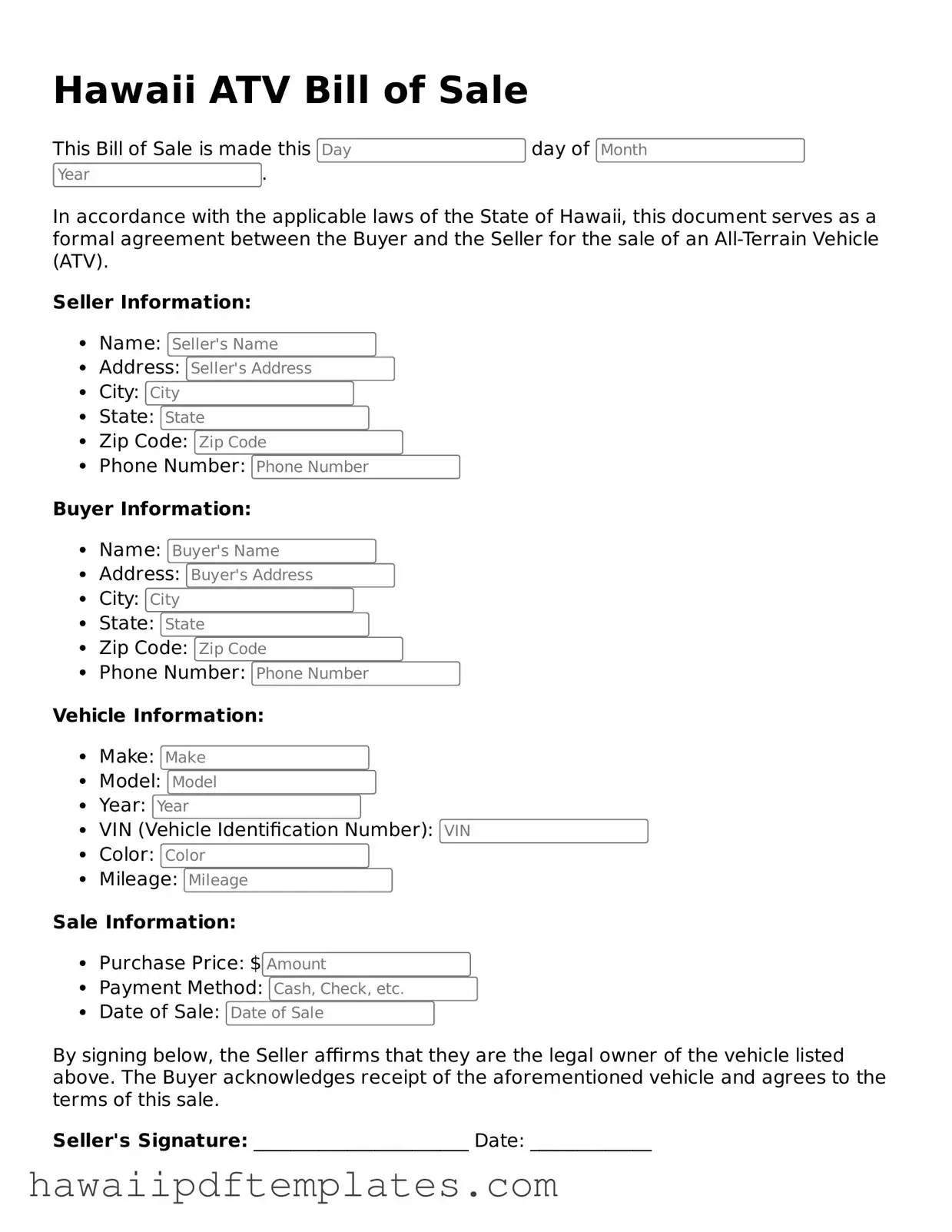Steps to Writing Hawaii ATV Bill of Sale
Once you have the Hawaii ATV Bill of Sale form in hand, you can proceed to fill it out accurately. This document will require specific information about both the buyer and the seller, as well as details about the ATV being sold. Ensuring all fields are completed correctly is essential for a smooth transaction.
- Start by entering the date of the sale at the top of the form.
- Fill in the seller's name and address in the designated fields.
- Next, provide the buyer's name and address in the corresponding sections.
- Describe the ATV by including the make, model, year, and VIN (Vehicle Identification Number).
- Indicate the sale price of the ATV clearly.
- Both the seller and buyer must sign and date the form to validate the transaction.
After completing the form, ensure both parties retain a copy for their records. This will help in any future reference or potential issues related to the sale.
